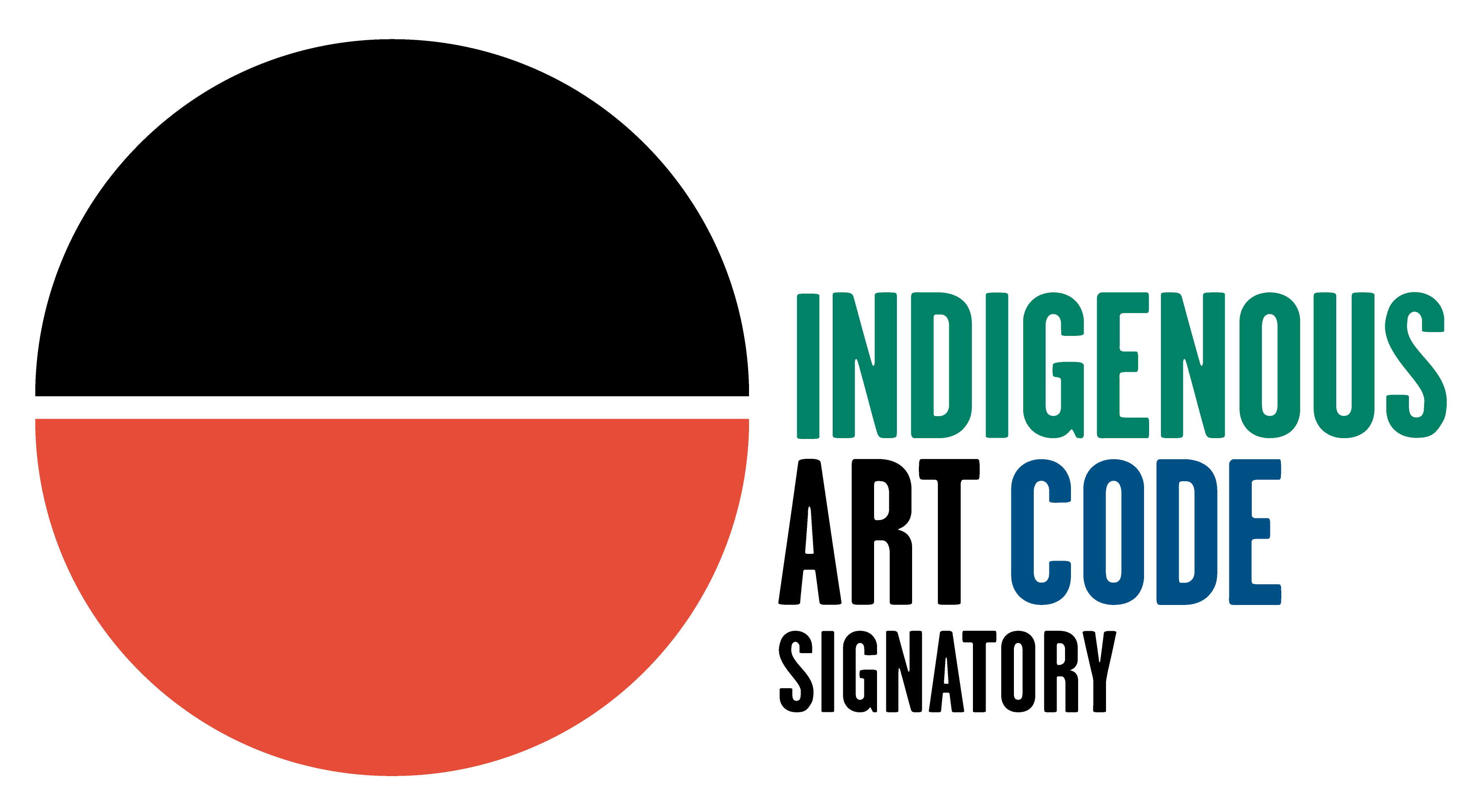Yalmakany Marawili Yolngu, b. 1957
37 1/8 x 16 1/2 in
The land that this work portrays is the artist’s mother’s home in the Dhudi Djapu clan estates around the meeting of the Dhuruputjpi River and the Yalata floodplain. It is a novel use of the sacred design merged with a naturalistic representation of the plant concerned.
It is a coastal area, this Dhudi Djapu homeland, that has territory leading up a river through plains country behind the beach. The plain is tidal and during the wet seasons it is flooded by the rains and tidal surge creating areas of brackish water. During the dry season the grass and black earth dry out. Then the fires come, turning a swamp into a huge plain of cracked black earth. Fresh water springs dot this sun baked plain forming small islands of vegetation and as Rarrandada (the hot time) builds the thirsty birds come to these sacred springs in their thousands. The noise of the guurrku or dhangultji (brolgas) and gurrumatji (magpie geese) is deafening, the mud scored with their tracks and the sky dark with the flocks of wheeling birds.
In Ancestral times, activities of Måna the shark took place here. The design repeated throughout the painting can also represent the waters supporting Darrangi -‐ a freshwater plant associated with this homeland for the Dhudi Djapu and the Ancestral Shark. This shark is often referred to as Måna but it is not to be confused with the Djapu shark at Wandawuy. This particular ancestral shark came to Garrinyirri (near Dhuruputjpi) from an area north in Arnhem Bay when an ancestral hunter of the Yirritja moiety, when out hunting speared this shark, wounding him only. His name is Gundunuru. Through a network of underwater passages this shark arrived at Garrinyirri, an area of open fresh water that can often be contaminated with salty water resulting from tidal surge.
Provenance
Buku-Larrnggay Mulka 4024OSIGN UP TO OUR MAILING LIST FOR ALL THE NEWS
* denotes required fields
We will process the personal data you have supplied in accordance with our privacy policy (available on request). You can unsubscribe or change your preferences at any time by clicking the link in our emails.


